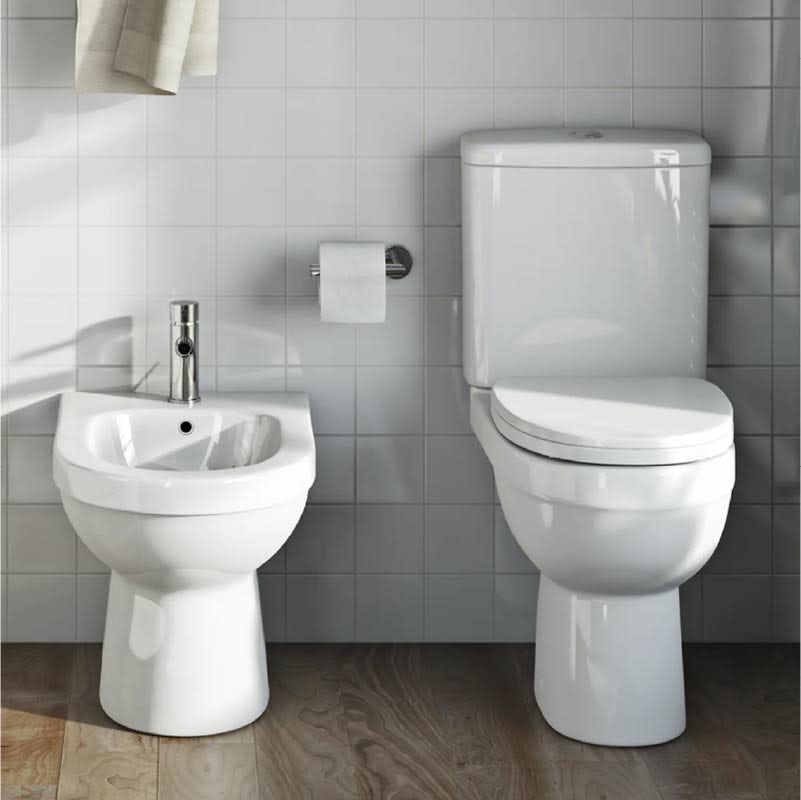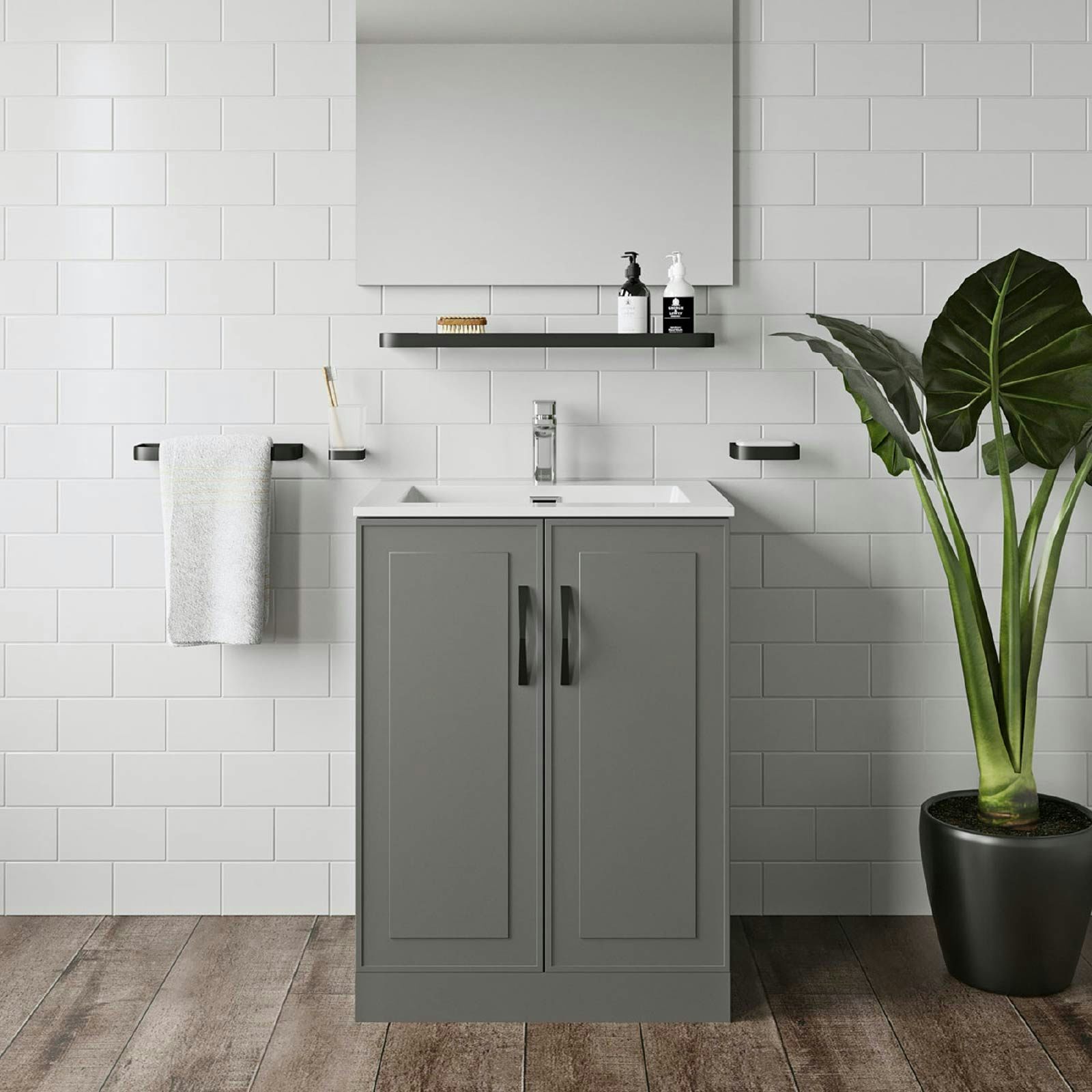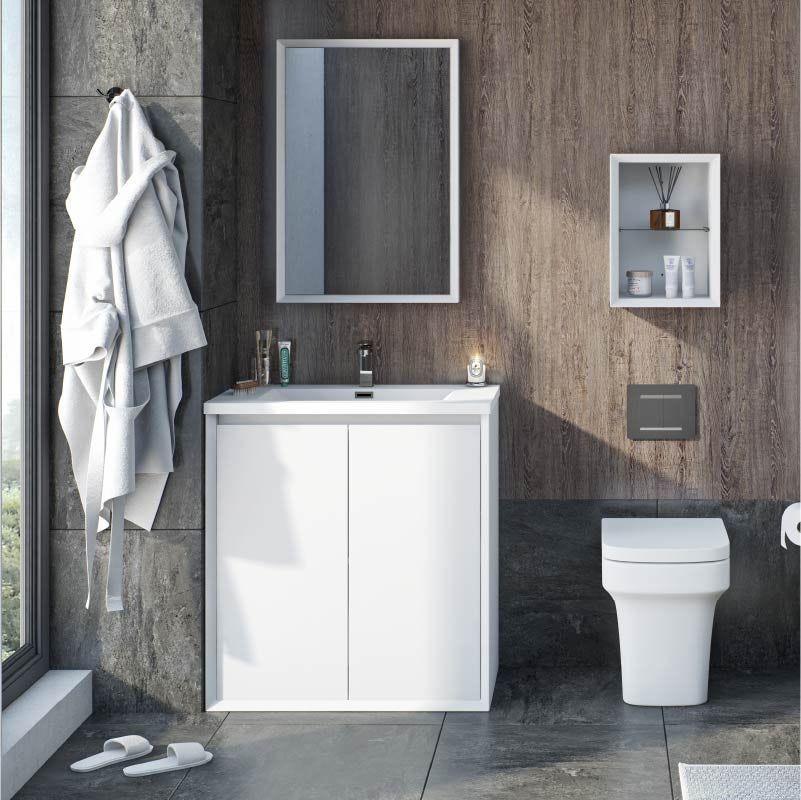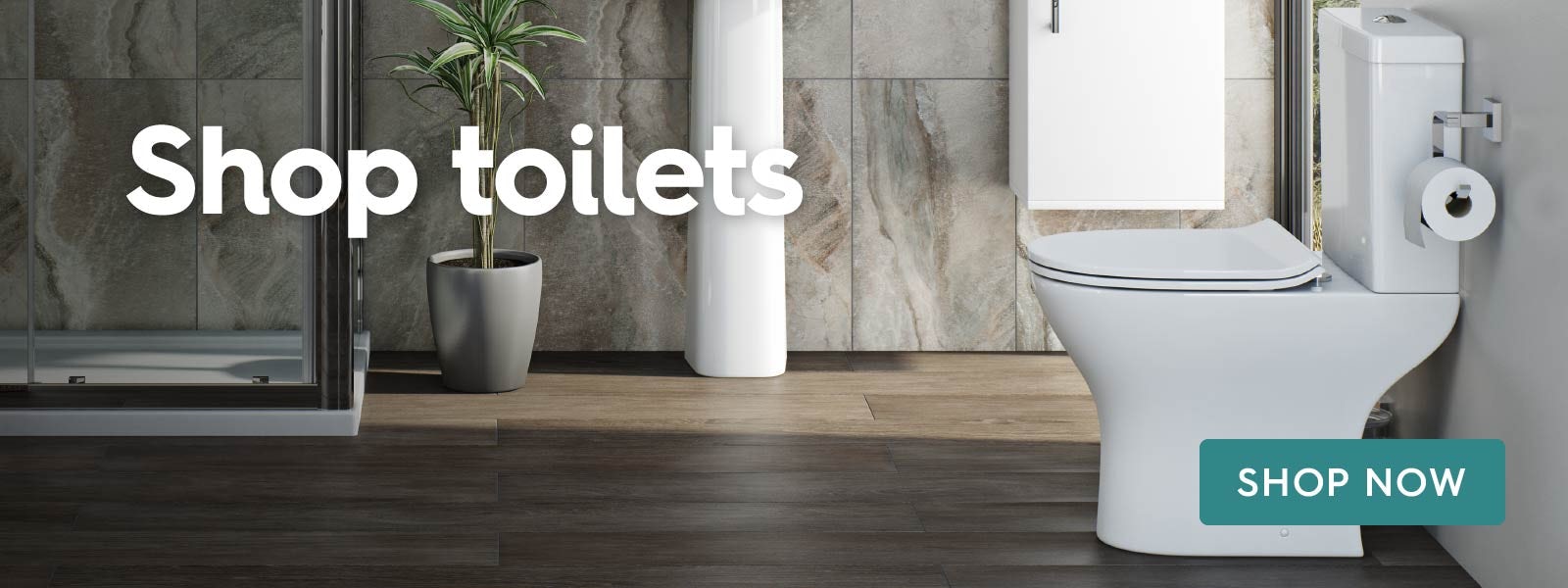Are you fitting a toilet on an uneven bathroom floor? If so, it’s time you found out all about bathroom shimming.
Shims are an extremely niche product that only people who have uneven floors or tall flanges will likely be aware of. Toilet shims are used by both installers and home DIYers to ensure that the toilet on such floors is level, which is important for it to function properly.
Usually made out of either plastic, rubber or wood, shims are small wedges that are meant to be squeezed between spaces to prevent things from feeling shaky and unstable. For levelling toilets, however, it is advised that you use either plastic or wood, as they are more resilient to water damage. They come in a range of different sizes and sport varying widths and lengths to ensure that you get that perfect fit and level.
New to shimming? Fret not, read our guide to find out more…
How to start shimming
Toilet
It is not that difficult to shim a toilet and can even be done with simple tools by yourself. All you will need are basic tools like a rubber mallet, some shims, a knife or a multi-tool.
First, we need to locate the gap between the toilet base and the floor that is causing it to wobble. Positioning a shim right next to the gap, gently and lightly tap the shim into the hole. We tap lightly to prevent the shim from breaking, as they are made out of thin materials which makes them more prone to snapping.
We can repeat this process with shims until we are satisfied, using the rubber mallet to drive them further in until the shims are nice and flush with the toilet base so that they are out of sight and the base looks flush with the floor. If you find that driving the shims any further would make the toilet flooring uneven, you can use a knife to either cut or snap the excess off if the shim is made of plastic.
Shims can be used to level toilets and bidets
Bathtubs
Beyond levelling toilets, there are plenty of other cases where toilet shims can be used. Plastic shims, in particular, have many uses that you may want to consider doing with all those extra shims lying around.
Shimming your bathtubs are a great way to ensure proper drainage of the tub as well. Rubber shims are the recommended option for levelling bathtubs as they are soft, able to hold high weights, and are flexible.
Bathroom vanity units
Another great place to look at shimming is an unstable bathroom vanity unit, particularly if they’re floor mounted. Similar to toilets, plastic shims are a great option to level it off if you notice that there is a bit of play in its stability.
Washing appliances
You can also use rubber shims to stabilise appliances like washing machines as well as pipes. Avoid using wooden shims as the high moisture exposure of kitchens and utility rooms will result in the wood rotting. We recommend using shims as it will help to reduce the rattling of pipes and washing machines significantly.
Top toilet shims
For a seemingly innocuous item, there are so many options for shims that it can get confusing sometimes. After all, we only want the best for ourselves, and getting good quality shims at the very start would mean that it is unlikely you’ll have to replace them in the future.
Plastic v rubber shims
Overall, plastic is more durable and stable than rubber shims as they are made from composite recycled plastic. They also come in varying degrees of rigidity and offer both hard and soft plastic, which are both easy to use and cover almost every need fairly adequately.
However, plastic shims aren’t especially useful in situations where you intend to stack the shims on top of each other or to use adhesive to join them. You’ll only end up limiting yourself to the heights, lengths, and widths you can purchase from the store—with none of them specially catering to your needs. In these instances, it is better to use rubber shims that can be combined using adhesive, and since they aren’t smooth, they will also better hold up against slipping over time.
Plastic shims are quite slippery and won’t always provide a lot of stability in high-movement areas like washing machines and rattling pipes. Rubber shims are strong and grippy, so they won’t slip as easily as plastic shims, and their soft material means they won’t scratch the floor. They are, however, a bit more difficult to use as they are soft, making them a bit of a challenge to fit.
Nylon plastic shims
Nylon plastic shims offer plenty of flexible ways to use them—they are perfect for use in the toilet and even for levelling off furniture as well. The shims are ribbed which offers more stability and will catch on surfaces more, thus reducing the chances of slippage. They are easy to work with as well as the ribs allow them to be stacked, which is uncommon for plastic shims, which ensures their easy to cut and retain their durability for a long period.
Flexible plastic shims
These flexible rubber-like plastic shims are great options if you want plastic shims that offer the flexibility of rubber. They also come with ridges that are great for stacking and for getting a grip on surfaces, using interlocking technology.
The bouncy material is great for dampening vibrations of things like washing machines and tumble dryers, and the softness also means they are suited for more delicate flooring.
Rubber shims
Rubber shims offer excellent value for money, and are ideal if you’re looking for shims that offer a great amount of versatility.
They are made with environmentally-conscious rubber that will withstand harsh elements, be it from water, impact or insects, thus guaranteeing their durability and longevity. The great part about rubber shims is that they don’t end up scratching up the flooring. They are even said to support up to 450kg in weight, giving you peace of mind that they won’t give way.
Conclusion
There are plenty of options for shims, and the right choice of shim will depend on what kind of project you minted to use them with. Both plastic and rubber shims offer different features that are perfect for different use cases, and it is important to figure out which is the best fit. With the characteristics of different shims listed out for you, it’ll be a breeze to decide which is best for you.
Shop toilets
Searching for that perfect toilet for your new bathroom? Browse our full and comprehensive selection today by clicking on the image below.









